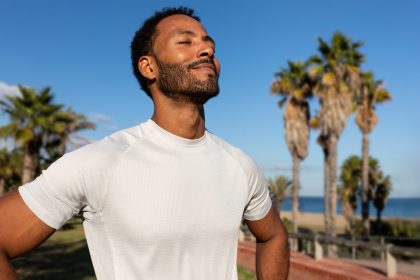As temperatures drop, many people instinctively retreat indoors, trading outdoor runs and training sessions for climate-controlled gyms. But emerging research suggests they could be missing out on powerful physiological benefits. Exercising in the cold doesn’t just challenge endurance—it can enhance performance, accelerate calorie burn, and stimulate adaptations that warm-weather workouts simply can’t replicate.
Cold exposure isn’t just about discomfort—it forces the body to adapt in ways that can lead to long-term fitness improvements.
According to an exercise physiologist, training in cold conditions places unique stress on the body, prompting it to become more efficient at temperature regulation and circulation. A sports medicine physician adds that cold exposure also reduces inflammation, aiding recovery and overall performance.
The idea that winter workouts offer a metabolic advantage isn’t new, but recent studies have reinforced this notion. Cold exposure activates brown fat, a specialized type of fat that generates heat by burning calories. This thermogenic effect, combined with the body’s increased effort to stay warm, leads to higher energy expenditure than equivalent workouts in warmer temperatures.
The science behind cold-weather performance
Research suggests that endurance athletes perform best when temperatures fall between 45 to 55 degrees Fahrenheit. At this range, the body can regulate its temperature more efficiently, reducing the risk of overheating and allowing for sustained physical output. This is particularly true for runners, who often report feeling stronger and faster in cool conditions.
Beyond performance, cold-weather workouts can also improve cardiovascular health. Exposure to lower temperatures forces blood vessels to constrict, a process known as vasoconstriction. Over time, this strengthens the vascular system, improving circulation and reducing cardiovascular strain during exercise.
Perhaps most intriguingly, studies show that just 11 minutes of cold exposure per week can trigger adaptations that make future cold-weather workouts feel easier. The body gradually becomes more adept at maintaining core temperature, enhancing endurance over time.
Maximizing the benefits of winter workouts
Making the most of cold-weather exercise requires strategic preparation.
To safely and effectively train in cold conditions, proper layering is crucial. Moisture-wicking base layers help keep sweat off the skin, while insulated outer layers trap body heat without overheating. Keeping extremities warm—especially fingers, toes, and ears—is equally important, as these areas lose heat the fastest.
Beyond clothing, hydration remains a key factor. Many underestimate fluid loss in cold weather, but dry air and increased respiratory water loss mean staying hydrated is just as important as in the summer.
Additionally, experts advise a gradual transition into winter workouts. Starting with shorter sessions in moderately cold temperatures allows the body to adjust before tackling more extreme conditions. Pairing outdoor training with indoor sessions can create a balanced routine that maximizes benefits while minimizing risks.
Understanding the risks and staying safe
One of the biggest risks is hypothermia, which can occur when body temperature drops too low. Early symptoms include shivering, confusion, and fatigue—signals that it’s time to warm up immediately. Another concern is frostbite, particularly on exposed skin. Wind chill can accelerate heat loss, making even moderate temperatures dangerous in certain conditions.
People with respiratory issues should also be cautious. Cold, dry air can exacerbate conditions like asthma, making breathing more difficult. In such cases, wearing a scarf or mask over the mouth can help warm and humidify incoming air.
Icy surfaces present another hazard. Even experienced athletes risk slips and falls, which can lead to serious injuries. Checking weather conditions and avoiding overly treacherous routes can reduce the likelihood of accidents.
For those with preexisting health conditions, consulting a doctor before beginning a cold-weather fitness routine is essential. While many can safely adapt to winter workouts, some may require modifications to avoid undue strain.
The future of cold-weather training
As researchers uncover more about the body’s response to cold exposure, winter workouts could play a larger role in fitness training.
Scientists continue to explore how controlled cold exposure impacts metabolism, inflammation, and endurance. Some athletes are already experimenting with integrating cold therapy techniques—such as ice baths and cryotherapy—into their training regimens to amplify these benefits.
The growing interest in winter fitness is also driving advancements in performance gear. From thermoregulating fabrics to insulated yet breathable footwear, innovation is making outdoor exercise more accessible, even in extreme temperatures.
For now, one thing is clear: cold-weather workouts provide an edge that climate-controlled environments can’t replicate. Whether aiming to boost endurance, increase calorie burn, or simply challenge the body in new ways, embracing the chill might be the key to unlocking peak performance.












